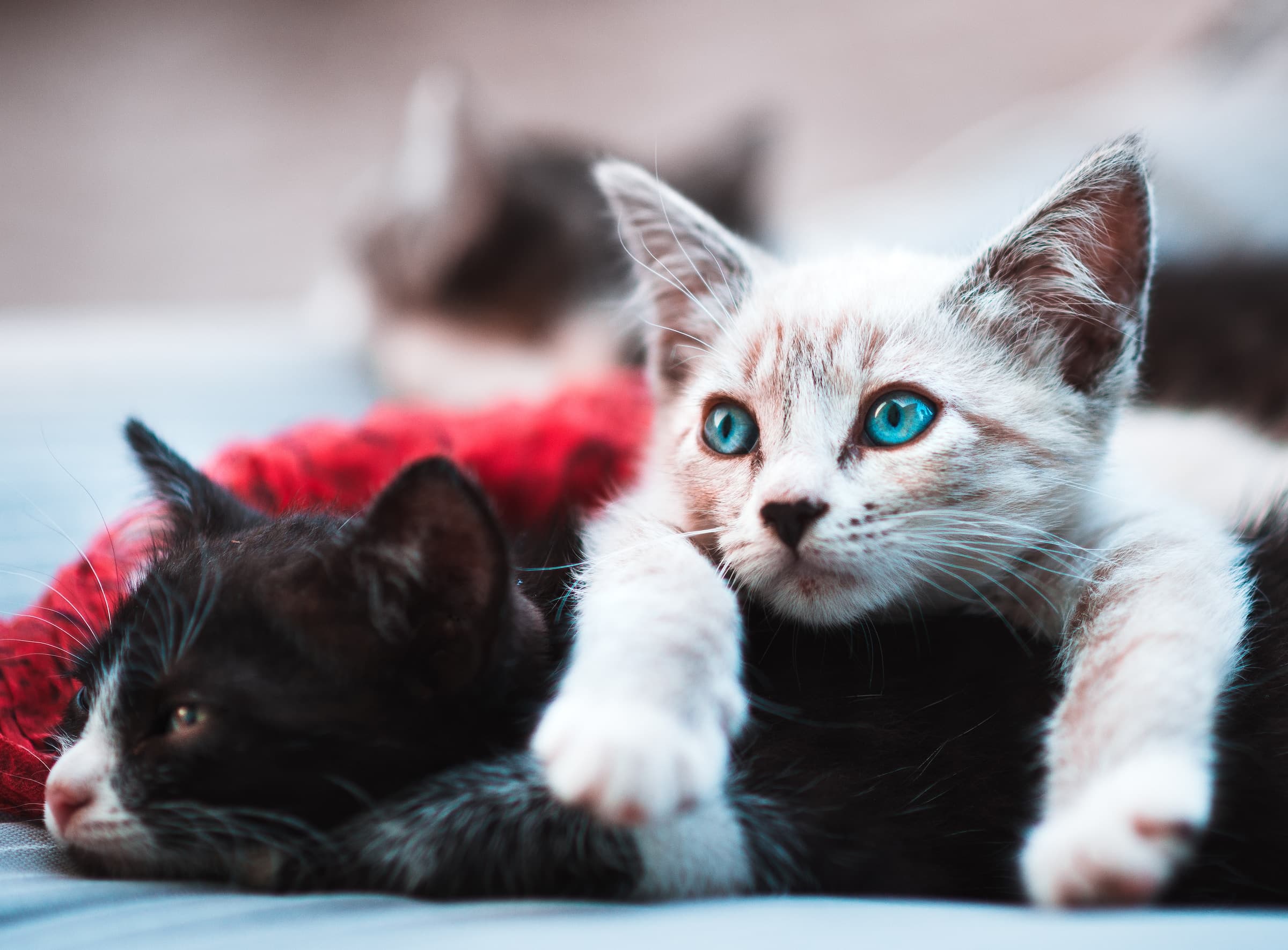Claws are a prominent part of cats' paws. A cat typically has 18 clawed digits, five on their front paws, and four on hind limbs each. Cats' claws are a critical part of their paws as they help in climbing, balancing, scratching, and defending.
An interesting fact from cat claw anatomy is that they are retractable. When the cats relax, they retract their claws and clad them with skin, which keeps them sharp as it reduces the wearing from contact with other surfaces. Since their claws are also curved, that may help them to climb or hold on to their prey.
How Many Claws Are on a Cat’s Paw?
A cat typically has eighteen claws, five on the front limbs each and four or five on the hind limbs each. The fifth front claw is known as the ‘dewclaw’ as it is proximal. Hunting and defending themselves may be reasons cats have extra claws on their front feet. Also, they are usually sharp.
However, there are cats with more than the usual number of claws. It happens because of a genetic mutation in cats.
Cats with 6 Claws Per Paw: A Closer Look
There are cats with six claws per paw. The cats have these extra toes because of an inherited genetic mutation called Polydactyly. These cats are also widely known as mitten or Hemingway cats (named after the author because he had a six-toed cat).
Moreover, cats with six claws are known for fascinating reasons.
They can be in sports as their extra claws help them with climbing and gripping.
For many generations, about 40% of Maine Coons had extra claws, which paved the way for this genetic trait, and now people adore it.
Some parts of the world consider these cats lucky as they can hunt and grip better than non-polydactyl cats.
Polydactyl Cats: Health and Considerations
According to PetMD, a polydactyl cat is a feline with more than the usual eighteen claws, even if it only has one more toe or dewclaw. You can find the extra toes on the front or the rear paws.
It occurs because of a genetic mutation in which Polydactylism, an autosomal dominant trait, is passed onto the kitten. It requires only one parent to carry the gene for this condition, which gives the kitten an extra claw.
Polydactyl cats are typically healthy, but rarely, some forms of polydactyl can pose health issues. In syndromic polydactyly, deformities such as twisted or short forelegs may occur because of genetic changes. It affects the cats’ mobility, and they may need medical help.
However, cats with non-syndromic polydactyly do not suffer from such deformities.

The Consequences of Declawing Your Cat
Declawing (Onychectomy) is a surgical procedure to amputate a part (or all) of the third bone joined to the claw of each toe. It makes the toe shorter.
The American Association of Feline Practitioners is against declawing as an elective procedure as it can cause adverse effects on your cats, including back pain, paw pain, tissue necrosis (tissue death), lameness (abnormal walk), and infection. And why would people do this to their beloved pets? Only because they scratch a sofa in the corner!
It is essential to understand that scratching is a typical behavior in cats. It helps the cats keep their claws in motion and stretch their body. Therefore, veterinarians suggest cats can get emotionally stressed because of not being able to scratch as a result of declawing.
Training Tips to Prevent Cat Scratching
Training against destructive scratching is crucial for your cat's well-being. You can teach the cat to stop scratching with the help of positive reinforcement, where you offer its favorite treat or toy as a reward for good behavior. Other ways to stop scratching can be:
Provide scratching posts as an alternative, and then lure your cat towards it by putting catnip on it. Place scratching posts in the areas they like to stretch.
Discourage scratching furniture by wrapping it with an unpleasant covering such as aluminum foil or using a non-toxic citrus-scented spray near the section you are protecting. Cats dislike the sound of aluminum foil and the scent of citrus spray.
Another way is using double-sided tape on the scratching area because cats hate the sticky feeling.
Conclusion
Understanding the importance of cat claws, why cats use them to scratch, and how to provide appropriate care not only ensures the well-being of our feline companions but also strengthens the bond between cats and their human caregivers. By appreciating the multifaceted role that claws play in a cat's life, we can create a more enriching and harmonious environment for these beloved pets, enhancing their overall quality of life and our mutual enjoyment of their company.
Frequently Asked Questions
How many claws do cats have? Do cats have 4 or 5 claws?
Yes, the number of claws on a cat is four or five on each paw. There may be over five toes in cats with mutation. How many claws do normal house cats have?
A typical house cat has 18 claws, five claws on front limbs each and four or five claws on back limbs each.
What happens if you don't trim your cat's nails?
Overgrown nails can grow into footpads and cause pain. It can also affect their mobility. Hence, a cat's nails need to be shortened every 10-14 days.
Do cats have an extra claw?
Yes, cats have an extra claw. It is the fifth claw (dewclaw) on the front paw. It helps the cats in gripping and climbing.
How many back claws do cats have?
Cats usually have four or five claws on the back paws each. Polydactyl cats may have over four or five toes on the hind limbs.
How many nails do cats have?
Cats typically have 18 nails, with five on each front paw and four on each hind paw.





